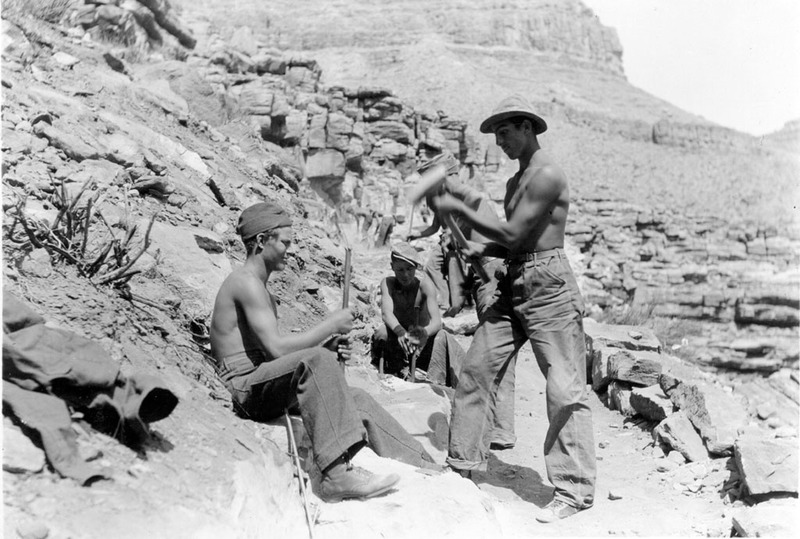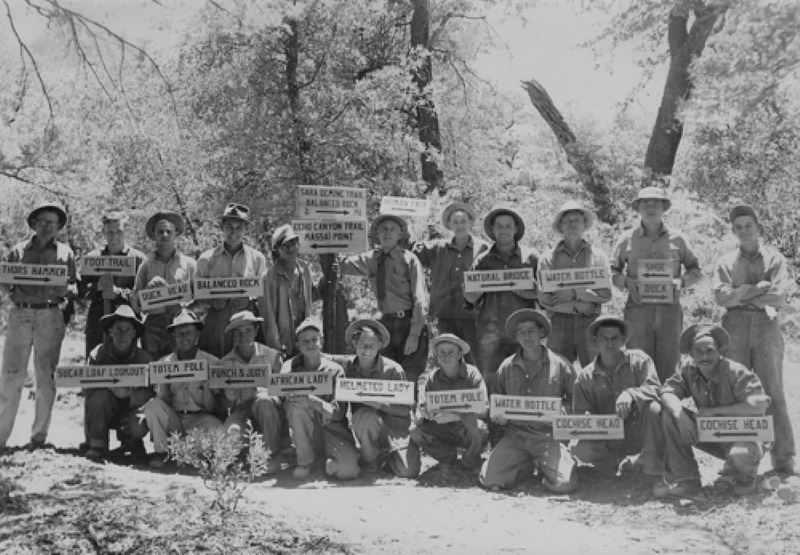Hymns in the Park
The Papago Park Amphitheater and the Civilian Conservation Corps

In the early morning hours of April 1, 1934, The Arizona Republic reported that 6,000 Arizonans gathered for a sunrise Eastertide service at the Papago Park Amphitheater. With seating for only about 5,000 people, an overflow crowd sat on the hillsides surrounding the amphitheater. The sound of a congregation singing “The Holy City” filled the calmness of the morning and echoed across the valley. During the service, Reverend C. Arlin Heydon, President of the Phoenix Ministerial Association dedicated the amphitheater with a prayer and a reading from the Gospel. The Civilian Conservation Corps (C.C.C.) had completed the Amphitheater in the previous year. It was one of first out of the many projects undertaken by the New Deal agency. The C.C.C. provided work opportunities for young men during the Great Depression by having them work on projects that built or rebuilt the nation's infrastructure and preserved its natural environment and national parks.
Early in his administration, Franklin Delano Roosevelt established the C.C.C. to expedite the economic recovery process during the Great Depression. The C.C.C. hired young men, many of whom had served in the military during World War I, to work on a variety of conservation projects. In particular, the work of the C.C.C. transformed America’s natural landscape by altering its land use. In Arizona, this work extended from the Grand Canyon to the southern board, and it diversified Arizona’s economy. By 1941, twenty-seven C.C.C. work camps had been set up in Arizona. The workers stationed in these camps built 55,000 check dams, 785 miles of service roads, and 583 miles of fence. What is more, the C.C.C. constructed over 2,500 public facilities, including picnic tables, park benches, fireplaces, and shelters.
These projects had a profound impact in Maricopa County. Young men labored tirelessly all day in the hot sun clearing irrigation ditches in Papago Park. Arizona’s canals needed improvement because of their importance to the state’s agricultural industry. C.C.C. workers built new canals with concrete pipes and highly advanced water storage tanks. They cleared vegetation and cut down dead trees, which often clogged up the canals and stopped the flow of water. Additionally, between 1933 and 1940, the C.C.C. worked on its largest project in Arizona at South Mountain Park. During this period, four thousand men worked at two camps at South Mountain, where they constructed over 40 miles of hiking trails, 18 buildings, 15 ramadas, 134 fire pits, 30 water dams and faucets. The National Park Service and the City Parks Supervisor collaborated with the C.C.C. throughout the process.
Although the work of the C.C.C. ended with the onset of World War II, it's legacy has persisted--written into the Arizona landscape, including the Papago Park Amphitheater. Arizona residents continued using this location for their Eastertide services for decades. With its growing population, sprawling suburban landscape, and denser religious infrastructure, the use of the amphitheater graduate declined. In 1970, according to The Arizona Republic, only 1,500 people attended the church service hosted by the amphitheater on Easter Sunday. Noise from the traffic on McDowell Road made it difficult for the attendees to hear what the ministers said during the service. Eventually, the Easter Sunrise services ceased by the end of the 1970s.
Today, the amphitheater remains empty most of the time, although hikers and tourists sometimes sit on the stone layered seats while taking a water break. However, the location itself it is rarely used for any major events or large gatherings. Nonetheless, its rich legacy reminds people of how this project and other C.C.C. sites brought communities close together at a time when our country faced economic peril.
Images





Creator: Unknown Date: Uknown